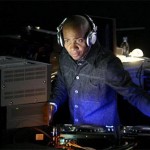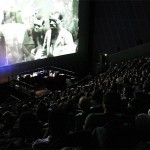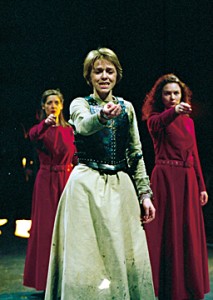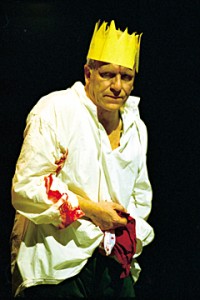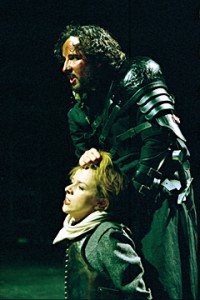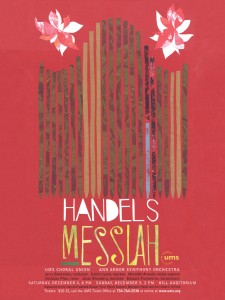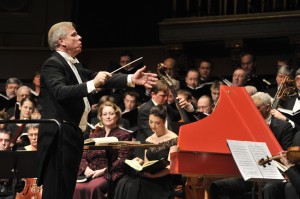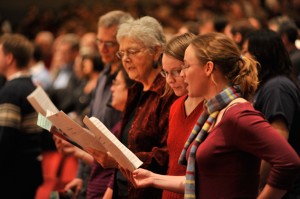[VIDEO] Messiah Memories Bloopers
UMS first presented Handel’s Messiah in December of 1879. Over several weeks, we released a series of Messiah Memories webisodes from everyone involved over the years. We couldn’t resist releasing these staff bloopers.
Previously:
Episode 1: Jerry Blackstone, long-time Messiah conductor, forgets his jacket on the day of the performance.
Episode 2: Father Timothy Dombrowski, choral union member for over forty years, remembers “The Bat out of Hill.”
Episode 3: Megan Sajewski, resident of Martha Cook dormitory, talks about co-chairing the annual Martha Cook Messiah Dinner.
Episode 4: Meg Bragle (mezzo-soprano) and Mary Wilson (soprano), Messiah soloists and good friends, talk about the fun of coming back to Ann Arbor to perform in Messiah.
[VIDEO] Messiah Memories: Megan Sajewski, resident of Martha Cook dormitory
UMS first presented Handel’s Messiah in December of 1879. In this third episode, Megan Sajewski, resident of Martha Cook dormitory, talks about co-chairing the annual Martha Cook Messiah Dinner.
Comment below with your own Messiah Memories!
Previously:
Episode 1: Jerry Blackstone, long-time Messiah conductor, forgets his jacket on the day of the performance.
Episode 2: Father Timothy Dombrowski and “The Bat out of Hill”
[VIDEO] Messiah Memories: Father Timothy Dombrowski and “The Bat out of Hill”
UMS first presented Handel’s Messiah in December of 1879. In this second webisode of our Messiah Memories series, Father Timothy Dombrowski, choral union member for over forty years, remembers “The Bat out of Hill.”
Comment below with your own Messiah Memories!
Previously: Episode 1: Jerry Blackstone, long-time Messiah conductor, forgets his jacket on the day of the performance.
[VIDEO] Cloud Gate Dance Theatre of Taiwan
In a long-awaited performance, Cloud Gate Dance Theatre of Taiwan presents Lin Hwai-min’s newest work, Water Stains on the Wall, on October 21 & 22 at the Power Center.
Below, Cloud Gate Dance Theatre of Taiwan in the words of Ann Arbor’s Taiwanese community.
And an interview with Artistic Director Lin Hwai-min upon his arrival in Ann Arbor:
And a little bit more about his inspirations:
VIDEO: Center for Chinese Studies New Millennium Kite Festival
Our Asia Series starts with Yuja Wang on October 9th.
This weekend, Center for Chinese Studies, inspired by the traditional Asian craft of kite flying, presented a one-day jubilee with a community competition, master kite fly-offs, lion dancing, and wind-borne activities, including a DIY kite workshop on September 25. Check out the fun:
http://www.youtube.com/watch?v=Opxj6G5kTo8
VIDEO: Who do you like to go to UMS shows with?
Long time UMS subscriber Penny Schreiber puts together a group of friends every year to attend UMS performances together.
Who do you like to go to UMS shows with?
From the UMS Archives: DJ Spooky
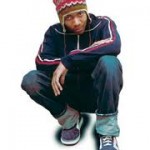 On January 14th 2005 the renowned composer, turntablist, multimedia artist and writer Paul D. Miller (aka DJ Spooky), shook the Power Center with his multimedia performance work Rebirth of a Nation.
On January 14th 2005 the renowned composer, turntablist, multimedia artist and writer Paul D. Miller (aka DJ Spooky), shook the Power Center with his multimedia performance work Rebirth of a Nation.
On Thursday, April 7th at 5:10pm in the Michigan Theater, DJ Spooky returns to Ann Arbor through the U-M School of Art & Design’s Penny W. Stamps Speaker Series. In his Stamps presentation, DJ Spooky explores the theme of sound in contemporary art, digital media, and composition, reconstructing the history of sound and recorded media through works by Brian Eno, Steve Reich, Moby, Chuck D, Pierre Boulez, Jonathan Lethem, Bruce Sterling, Manuel Delanda, and Naeem Mohaimen. Using the essays that are in Miller’s recent book, Sound Unbound, Miller creates a rip-mix-burn-lecture, using historic texts and rare audio recordings and films, to demonstrate the complex relationship between text and art in a multimedia context.
Hope to see you at the Michigan Theater on Thursday at 5:10pm!
Did you see Rebirth of a Nation? Here are some photos from his 2005 presentation at the South Bank IMAX wit the Optronica Festival…
This Day in UMS History: Royal Shakespeare Company History Plays (March 10-18, 2001)
Ten years ago today, UMS audiences began a great experiment — the Royal Shakespeare Company presenting four Shakespeare History plays (Henry VI, parts i, ii, and iii, and Richard III) over the course of 27 hours with lunch and dinner breaks built in. The productions, directed by now-RSC artistic director Michael Boyd, marked the beginning of a long relationship between the University of Michigan and Ann Arbor with the RSC. Over the past decade, this partnership has included three major residencies, as well as workshopping new plays on the U-M campus. Each residency was accompanied by dozens of free educational events for students and the public-at-large.
Those who were present will no doubt fondly recall some of these images from the productions:
The three Henry VI plays were presented at 11 am, 2 pm, and 8 pm on a Saturday, with audiences returning on Sunday for the climactic production of Richard III. (There was also one mid-week cycle, which ran Tuesday, Wednesday [both matinee and evening], and Thursday.) Since that season, UMS’s theater programming has expanded significantly, with an annual commitment to presenting both live and high-definition broadcasts of international theater — including this season’s productions of Richard III and The Comedy of Errors by another British theater company, Propeller. Like the RSC, Propeller presents contemporary interpretations of Shakespeare and works with an ensemble cast; unlike the RSC, Propeller uses an all-male cast to present the Bard’s works, as would have been the case in Shakespeare’s day.
Richard III opens at the Power Center on Wednesday, March 30, and The Comedy of Errors opens the following evening. Tickets can be purchased at www.ums.org or by calling 734-764-2538.
VIDEO: Connecting Artists and Kids Through UMS Youth Performances
During a two week period (that began on Friday) UMS hosts five “youth performances” — performances by mainstage artists held during the school day and attended by kids ranging from ages 5-18 from throughout southeastern Michigan. In December, the Carolina Chocolate Drops gave a youth performance to a full house of kids the same day as their sold-out public performance, teaching songs and sounds, as well as performing music. The atmosphere was electric. At the public performance, the CCD talked about how committed they are to providing educational experiences for youngsters and how much they enjoyed performing for the kids earlier in the day. In this video, some students from a local elementary school in Ann Arbor talk about what they enjoyed most about the performance.
Although they only last an hour, these youth performances take literally dozens of people and hundreds of person-hours to pull off. For each performance, UMS creates a “teacher resource guide” that provides background information for teachers, as well as activities they can conduct with students in the classroom. Dozens of Advisory Committee volunteers serve as ushers and provide logistical support for getting all of the students in and out of the venue in a timely fashion. And, of course, backstage the production staff is working with the artists to ensure a top-notch performance. UMS Youth Education Manager Omari Rush is at the center of it all, creating the teacher resource guides, communicating with teachers, ushers, production staff, and following up with those in attendance to ensure an optimal experience.
Recent performances include Brazilian dance, a Native American songwriter, a salsa band, and high school students performing classical music:
Grupo Corpo — Friday, January 21
Joanne Shenandoah — Monday, January 24
Baby Loves Salsa — two performances on Monday, January 31
Sphinx Competition — Friday, February 4
UMS Youth Performances are just one component of a well-rounded youth education program that also includes teacher “cultural literacy” workshops; culture-focused book clubs; day-long intensive “immersions” that focus on a specific culture, community, or art form; and training with education experts provided as part of UMS’s relationship with the Kennedy Center Partners in Education program, which provides educators with arts-infused strategies to enhance student learning across various areas of the curriculum. Click here for complete details on all youth education programs.
This Day in UMS History: Bill T. Jones & Arnie Zane Dance Company (Jan 22-23, 2010)
Last year UMS had the pleasure of presenting Fondly Do We Hope…Fervently Do We Pray, the 90 minute piece inspired by Abraham Lincoln, created by the Bill T. Jones & Arnie Zane Dance Company. The company was here in Ann Arbor for a week long residency.
Please join us in reviewing some of our very first UMS Lobby posts!
T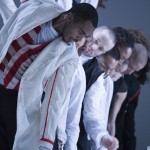 he Creative Process Behind “Fondly Do We Hope…”
he Creative Process Behind “Fondly Do We Hope…”
Keepin’ up with the Joneses: BTJAZ Dance Co. in Residence
People are Talking: Bill T. Jones & Arnie Zane Dance Company
VIDEO: UMS President Ken Fischer Receives Top Honor at APAP|NYC 2011 Conference
Kenneth C. Fischer, president of the University Musical Society (UMS) of the University of Michigan, was recognized by his peers at the annual Association of Performing Arts Presenters (APAP) Conference on Monday, January 10 in New York City at APAP’s Annual Awards Ceremony and Luncheon in the Grand Ballroom of the New York Hilton. He received the Fan Taylor Distinguished Service Award, presented each year to an individual whose outstanding service, creative thinking, and leadership have had a significant impact on the profession of presenting and/or on the Association of Performing Arts Presenters. The recipient of the award is kept secret until the annual luncheon at the APAP|NYC conference.
Fischer is currently in his 24th season at the helm of UMS. During that time, he has served on the Arts Presenters’ Board of Directors for two different full terms, including serving as the Board’s Vice Chair. APAP President and CEO Sandra Gibson said, “Ken has been an amazing supporter and colleague, and a tremendous contributor to the field.”
“Oh, man, this is a big surprise,” said an emotional Ken Fischer after being presented with the award and after being informed that his wife Penny, son Matt, daughter-in-law Renee, and grandson Alex were present in the room. “To be receiving an award that’s named after Fan Taylor, who founded this organization [Association of Performing Arts Presenters] is deeply meaningful recognition for me. When I started at UMS, I tried to learn from those who had gone before me — both at UMS and within the field of concert presenting. My faculty became the presenters whom others admire and respect. Rather than give me answers, my colleagues suggested critical questions that I should be asking myself.” After talking about the legacy of long-serving predecessors at UMS (Gail Rector from 1957-1987 and Charlie Sink from 1904-1968) and his mentor, Patrick Hayes, who desegregated the theaters of Washington, D.C., Fischer added two more thank yous: “To the community of Ann Arbor and the University of Michigan, which have provided support for the arts for 131 years. We are so lucky, so blessed with this particular community, which is absolutely extraordinary. And finally, my magnificent staff colleagues.”
The award is named for Fan Taylor, for her many contributions to the field of presenting. Taylor was instrumental in the development of what was then called the Association of College and University Concert Managers, which evolved in Arts Presenters. She served as Arts Presenters’ first secretary-treasurer and eventually its first executive director. She passed away in 2008 at the age of 94. Fischer is not the first UMS employee to receive the Fan Taylor Award, which was first presented in 1972; former executive director Gail Rector received it in 1985.
The event was emceed by actor David Hyde Pierce.
UMS Living Archive Interview: E. Daniel Long (Part One)
E. Daniel Long is one of Ann Arbor’s most beloved music teachers. Above, Mr. Long reminisces about some of his favorite moments on the Hill Auditorium stage and the most important ingredient needed when creating music.
Stay tuned for part two where Mr. Long discusses bringing his students to see performances. His pivotal role in promoting student attendance of live music helped UMS form our Youth Education Department.
Handel’s Messiah: 50 Years of Memories
As the Group Sales Coordinator at UMS, I speak with UMS concertgoers each year in late summer who are looking to book their group reservations as soon as possible. Without fail, several of these calls are for our annual presentation of Handel’s Messiah. As Delores Forsmark and I were speaking about her reservation this year, she shared with me that she and her husband have attended the Messiah performance for more than 50 years. I asked Delores if she would consider sharing some favorite experiences with us, and her husband Bert sent me a wonderful letter explaining how significant this holiday tradition has become for them.
Bert first heard the piece in its entirety after receiving the LP as a Christmas gift from his brother. Delores and Bert began attending the Messiah together in 1958, when Delores was a student at the University of Michigan. He and Delores have made the drive from Flushing, sometimes even in harsh winter snow and ice storms, almost each year since then. Bert writes, “Except for a few times when our kids were small, we have attended performances at Hill Auditorium (or the Michigan Theater, during the renovation) almost without exception, always with guests.”
Ever since that first interaction with the piece, the Forsmarks feel a special connection with the Messiah. Bert told me about how a painting he and Delores purchased, Dali’s Crucifixion, made him remember the lyrics “All we like sheep have gone astray: we have turned every one to his own way…”. Bert recalls, “That was in 1965, and as I sit here typing this, I still weep.”
Bert and Delores’ most memorable Messiah performance was in 1983. Having attended with 42 of their fellow church members and their pastor, Bert recalls how the soprano soloist that year brought a new significance to the performance. He still vividly remembers the passion she brought to the piece: “When she sang ‘Rejoice, rejoice, rejoice greatly’, her face glowed, and the audience rejoiced with her. She easily stole the show, and was the talk of the whole busload.” That soloist was Kathryn Bouleyn, also known as Kathryn Day, who previously performed in the Messiah at UMS in 1976, 1977, and 1978.
At UMS, we know that many of you share the Forsmarks’ appreciation for our annual production of the Messiah. Dr. Andrew Berry has also been attending for more than 50 years – he writes, “This is the beginning of my Christmas season every year. We always have a group, and we carpool to have dinner afterwards.” So what are your favorite memories? What is it about this performance that makes it so special for you? What are you most looking forward to when you walk into Hill Auditorium this year? We hope you’ll share your stories, and we look forward to starting up the holiday season with you this weekend.
It used to be that I found the repeated Amens at the conclusion to be tedious, but now I hear them as joyous Amens rolling through the heavens when the redeemed are gathered as the parts are sung, and at the conclusion sigh and say, ‘Only 364 days until the next one.’ -Bert Forsmark
Share your “Messiah Memories”
An annual tradition since 1879, UMS’s presentation of Handel’s Messiah has become a “signature” Ann Arbor experience. We’re so grateful for the participation of the community in this event year-after-year, and we hope you’ll share with us some of your favorite Messiah memories: how many years you’ve attended, why you look forward to Messiah every year, what makes this event special to you, little remembrances…
I’m posting a video interview here with UMS usher Paul Bianchi who attended his first Messiah last season. Scroll ahead to minute 3:20 for his special memories.
And let the holiday season begin!
Stew, Space, and UMS: UMS Off-site
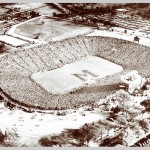 Can you imagine how it would feel to watch a football game on the stage of Hill Auditorium? Or how about listening to a string quartet in the Michigan Stadium? Just plain wrong, right? These questions are comical, but not unlike the questions UMS has to ask when deciding on where to present our artists.
Can you imagine how it would feel to watch a football game on the stage of Hill Auditorium? Or how about listening to a string quartet in the Michigan Stadium? Just plain wrong, right? These questions are comical, but not unlike the questions UMS has to ask when deciding on where to present our artists.
The subject of venue space is an important factor in arts presentation. By its nature, each venue has a character or personality of its own. When exploring the choices of where to present a particular artist, UMS has several factors to consider. First, we must consider whether the venue can deliver practically and technically for the performer. Second, is the place acoustically right for this performer? The third and possibly most important question is does the space add or subtract from the experience as a whole?
This week UMS presents Tony award-winning Stew and his eclectic and theatrical band, the Negro Problem. Stew and the Negro Problem combine biting social satire, gritty folk with psychedelic pop. When UMS decided to present Stew, the subject of space–where to present his concert–was an extra hot topic around the UMS offices. What kind of space would give patrons the best Stew experience? We wanted a space that we could make into our own. We searched for a space that is casual, cabaret and would allow the audience to move around throughout the concert. We wanted a space that was grungy and downtown; a place that perhaps could feel a little bit like New York City for Stew and the audience. We found all these factors and more in the warehouse-like space at 523 S. Main Street, which is the former Leopold Brothers. Come check it out.
UMS loves playing with space and has been presenting off-site for decades. Here are, in no particular order, our top 10:
1. Twelfth Night by the Globe Theater in the Michigan Union Ballroom (November 18-23, 2003)
2. Susurrus at the Matthaei Botanical Gardens (September 9 – October 3, 2010)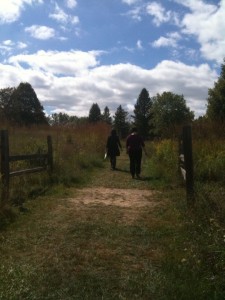
3. River , a butoh-inspired work by Eiko and Koma in the Huron River/Nichols Arboretum (September 11 and 12, 1998)
4. A concert by U Theater from Taiwan in the Nichols Arboretum (September 16-20, 2003)
5. So Percussion’s strolling concert through the U-M Museum of Art (February 6, 2010)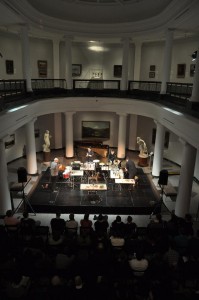
6. James Galway’s mini concert at the Gandy Dancer Restaurant (March 11, 1999)
7. Shostakovich String Quartet concerts in the Apse at UMMA (January 25-29, 1994)
8. Jazz @ Lincoln Center Swing Dance “participatory concert” at the EMU Convocation Center (February 4-5, 2000)
9. The Vienna Philharmonic at the Detroit Opera House (February 27, 2003)
10. Pushkin’s Boris Godunov directed by Declan Donnelan at the U-M Sports Coliseum (October 29 – November 2, 2003)
Do you have a favorite UMS experience from a off-site performance?
ONCE. MORE. Tour: 1960s Ann Arbor in Memory and Imagination
This past August, UMS Interim Director of Education Claire Rice made an interesting proposition: research and design a tour of the most important ONCE Festival-related sites in Ann Arbor. Of course, many of the original venues that housed ONCE performances or served as hangouts for the city’s artistic and political revolutionaries have been replaced or, even worse, erased. Thus the project became an exercise in excavation and imagination, as I set off to recreate, revisit, and remember some of the local sites that helped shape—and were shaped by—the artistic and political upheaval so prevalent at that time.
View ONCE. MORE. Tour: 1960s Ann Arbor in Memory and Imagination in a larger map
After discussing the project with Claire and UMS Programming Manager Mark Jacobson, I headed off to do some preliminary sleuth work at the University’s Bentley Historical Library, which holds a small but rich collection of ONCE-related memorabilia. But we needed more: more detail, more history, and more stories regarding the ONCE Festivals and their impact on 1960s Ann Arbor. Since the official ONCE archives are located at Northwestern University, we went straight to the source, searching for local experts willing to share their time and experiences with us. Thanks to the help of Karen Jania, Susan Wineberg, Alan Glen and others, we began to put together a tour that is, we hope, as diverse as it is rich. We had especially memorable conversations with Kathleen Timberlake (on-and-off-again Ann Arbor resident and ONCE attendee) and Harold Borkin (Professor Emeritus of Architecture and ONCE Group member), whose extraordinary stories provided a “behind the scenes” look at the complex web of art, politics, and experimentation that immersed 1960s Ann Arbor.
Although our original intention was to organize a bus and/or bike tour of our favorite ONCE-related sites, we realized that, because many of these locations no longer exist in their original form, such a tour would simply inhibit your ability to effectively remember and imagine some of the city’s historic venues. The self-guided tour found here is thus just one result of the journey described above, and the ten locations we chose to incorporate—including performance venues, food joints, and university spaces filled with symbolic meaning—represent only a sampling of Ann Arbor’s rich historical narrative.
Here are some thoughts from those who experienced the original ONCE events in the 1960s:
Kathleen Timberlake:
Centicore was originally on Maynard. It was there that I recall seeing Andy Warhol move through a crowd waiting for him outside the store. He was a paste white zombie figure in a sea of dark grubby students. I don’t know exactly when it moved to South U, maybe the early ’70s. I left A2 in late 1969 and returned in 1976. It was still on South U at that time.
I remember the Unitarian Church on Washtenaw fondly; its current incarnation sports a rather over decorated scary interior that obscures much of the original church addition’s clean design. Early photographs of the church’s interior might convey a better sense of its space and how it was capable of being used for a variety of venues.
Wystan Stevens:
I was a student in a couple of Milton Cohen’s drawing classes at the U-M, when I was in the U-M Art school (A&D) in the early 1960s. I never actually saw the Space Theater except for the time one summer evening a few years later when I was walking on Liberty Street, across from the Michigan Theater, and looked up at the open second-floor windows of the next-door building. The rooms were very brightly illuminated, and the Space Theater dome was visible inside. Memory suggests that I saw Cohen there in the window, but it may have been Joseph Wehrer — or maybe I didn’t see anybody at all. Wehrer and Cohen were both active in the Cinema Guild, along with Ed Weber (curator of the U-M library’s Labadie Collection of radical literature) and others. Cinema Guild showed movies on weekend nights in the A&D auditorium, where George Manupelli’s AA Film Festival also got its start. (I saw Andy Warhol and his troupe there for one of the early festivals). I was in Manupelli’s A&D classes also, and he assigned me a chore for the first festival, of placing festival posters in every store window on Liberty Street, from State to Main. Cohen was a film buff, and encouraged his students to watch films.
The first Centicore location on South U was a tiny, crowded store east of Forest Avenue, and probably didn’t get a good attendance. I was in there a few times, to browse the paperbacks. This was many years before Community News Center moved into the corner building. In fact, I don’t think the corner building was there yet in 1965 — only a gas station on the corner.
Centicore’s owners were big kite flying enthusiasts, and used to test various shapes and designs (for sale at the Maynard Street store) by flying them in Burns Park. That Centicore location also cashed in on the streaking fad, by offering a big discount one day to anyone who would streak to the store. Several people did in fact show up naked at the store’s counter, and a photo of them (taken from behind) ran in the Michigan Daily. Another time they had Andy Warhol there, signing copies of an expensive book he had just published (about Marilyn Monroe, as I recall). Several students who couldn’t afford the book but wanted a Warhol autograph went first to the White Market nearby, where they bought boxes of Brillo pads or cans of Campbell’s Tomato Soup — all of which Warhol reluctantly signed.
Raymond Detter:
Those were years in which I enjoyed a number of fun dinners and parties at Milton’s apartment with the attached skylight studio and presentations of his creations. I remember, particularly, “Openings” before he left town, first with Hilly Amis, former wife of Kingsley, and then permanently for Cape Cod where I visited him on two separate occasions at Wellfleet. Shall we start putting together a Bloomsbury type memoir? Milton never drank alone. But he was never alone. A very special person. He had his last lover and companion put his ashes into castanets so one could play Milton. She brings them with her when she comes to town.
So check out the map, share your stories about these historic sites, and augment our work with your own “list” of 1960s Ann Arbor hotspots!


